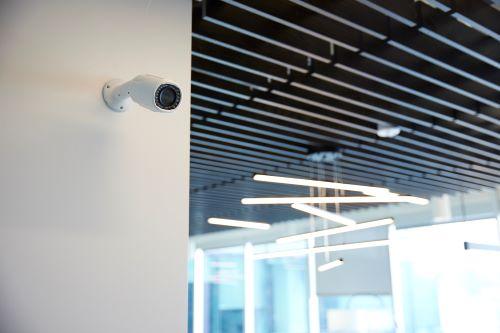Leveraging video analytics for business enablement
Retailers have traditionally considered video surveillance to be a security-focused activity.
This makes sense—after all, the recent increase in retail crime underscores the value that a robust surveillance system can have when it comes to reducing shrink and improving the safety and security of retail locations.
In fact, modern surveillance devices help retailers secure their stores in ways that that would have sounded like science fiction even just five or ten years ago, automatically alerting on unusual or suspicious activity before a security incident even takes place.
But advancements in modern analytics have also made it possible for retailers to leverage their surveillance devices in ways that go far beyond security. As visual sensors grow more advanced and image quality and processing power continue to improve, a growing number of retailers are using their existing surveillance systems to gather new data and generate the actionable insights needed to increase efficiency, streamline operations, and advance their business intelligence capabilities.
As more businesses gain access to valuable new video analytics, retailers who make the most of their data are already gaining a critical leg up on their competitors.
The Accessibility of Analytics Is Leveling the Playing Field
In the past, widespread use of video analytics was constrained by factors like bandwidth limitations and cloud storage expenses—most retailers simply couldn’t afford the fees associated with sending all of their video data to the cloud to be processed and analyzed.
Today, deep learning capabilities come standard on many surveillance devices, allowing advanced analytics to be run at the network edge and dramatically reducing the amount of data that needs to be sent to the cloud.
Rather than uploading and storing endless hours of video, modern devices can process video locally and send only the relevant metadata (and perhaps a short corroborative video) to the cloud for further analysis.
Thanks to the increasing power of edge devices, retailers of any size can utilize advanced analytics to improve security at their locations. Best of all, as the uses cases for analytics expand beyond security, those same retailers can leverage video analytics to improve their operations and businesses intelligence capabilities—and many are learning that they can enjoy these benefits using the surveillance devices they already have in place, with little additional investment needed.
The accessibility of analytics has leveled the playing field significantly, and it is increasingly critical for retailers to ensure they are making the most of their edge devices.
Leveraging analytics to generate business insights
Perhaps the most valuable benefit provided by video analytics is the ability to track the volume and behavior of customer traffic within stores. It’s important to understand how many customers are visiting a given location, what times are particularly busy, how long customers tend to linger within the store (or even within specific areas), and how they move within it.
By understanding when high-traffic periods occur, retailers can more effectively allocate their staffing resources by increasing the number of employees during busy times and reducing them during slow times. Similarly, analytics can monitor queue lengths, automatically alerting staff to open another register if lines become too long.
Few things make customers abandon their purchases more consistently than long lines, and modern analytics can help avert that situation.
By monitoring traffic, stores can also identify where layout improvements can be made by identifying bottlenecks and other obstacles. They can also improve their ability to identify which displays or products are consistently attracting the most customer attention. This provides critical insight into what customers want and what they don’t, allowing retailers to plan events and promotions more effectively, while also foregrounding popular products within their locations.
Analytics can even help stores link their inventory, point-of-sale, and marketing data to better understand what items are popular and when stock may be running low, allowing them to be reordered in time to avoid product shortages. By integrating video data with information from other sources, retailers can get a more complete picture of what is actually happening in their stores and make decisions accordingly.
While the accessibility of analytics has been a boon for smaller retailers, large retailers also derive a particular benefit from the ability to aggregate insights across a wider network of stores. By pulling data from stores in a wide range of locations, larger retailers may be able to generate additional insights to inform their business strategy on a national (or international) scale.
Video analytics is the future
For today’s retailers, leveraging video analytics to improve operations and generate business intelligence insights is increasingly essential. While modern video analytics play an important role in keeping locations secure, they are also helping retailers improve their bottom line through increased efficiency, valuable new customer insights, and expanded data collection and integration.
Make no mistake—data is king in today’s world, and advanced video analytics are currently helping retailers of all sizes make use of their data in new and exciting ways to better serve customers and improve overall business outcomes.
See content involving Axis Communications.







